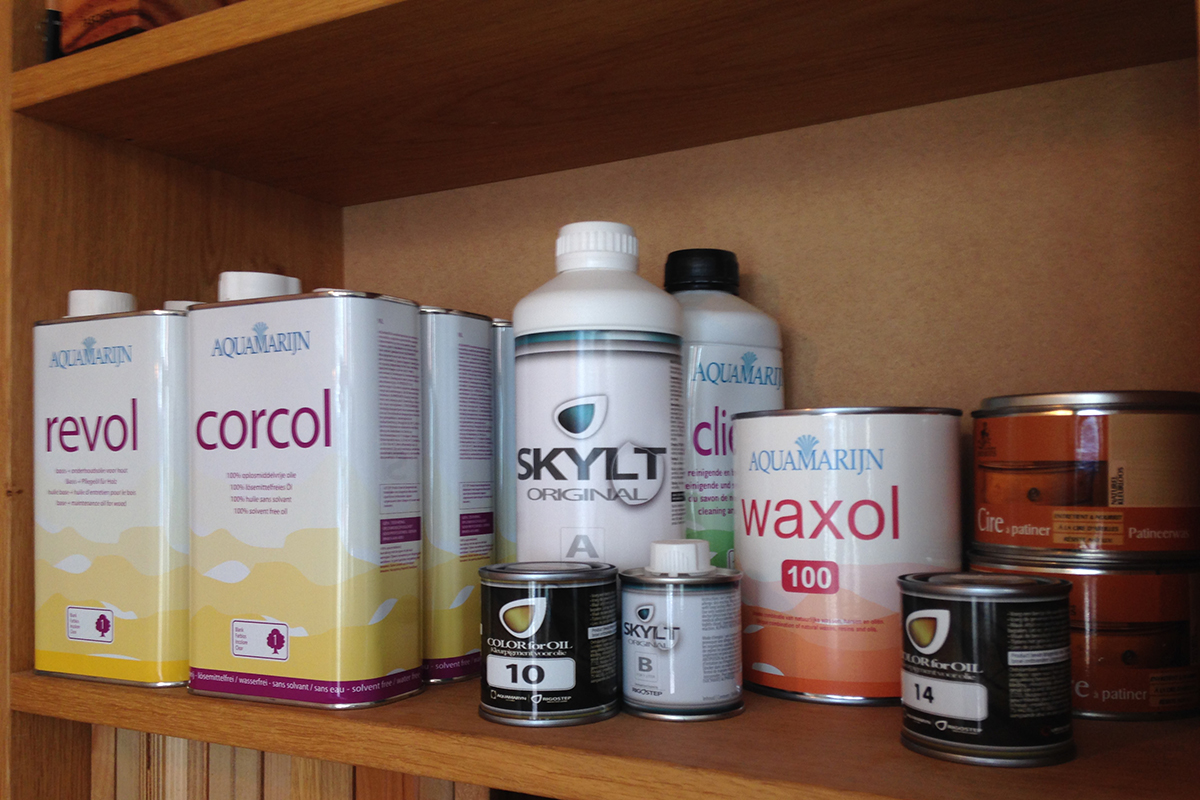

To protect a wooden table against stains and scratches we finish it with oil or varnish. But what’s the difference between these two options, and which are the pros and cons of both?
An oil finish gives wood a more natural look than varnish. The oil is absorbed by the wood and gives it a darker, warmer colour. But the wood still feels like wood, and the grain is still clearly visible.
Varnish is more durable than oil, but it’s also more visible. Varnish gives the wood a matte or shiny layer, the wood becomes darker and feels smooth, it loses the feel of real wood. An exception to this rule is Skylt: a two component varnish that protects the wood but leaves it looking like unfinished wood. Skylt is a good choice if you want the wood to look natural but still want to protect it against stains.
Though a varnish finish is more durable than oil, it’s also harder to touch up. A table with oil finish you can sand locally and touch up with oil when it’s stained, while a varnished table with stains or scratches will have to be sanded down completely and given a new layer of varnish.
< Back
For Bas and Nienke we made this stylish wall unit, with paneled doors and integrated led spots, of solid pine with a hand painted grey finish.
Read more >An ECO oak shelf is more rustic than normal oak, which makes it better for the environment and for your wallet.
Read more >See all the steps we take to turn our customers ideas into the products that enrich their homes.
Read more >